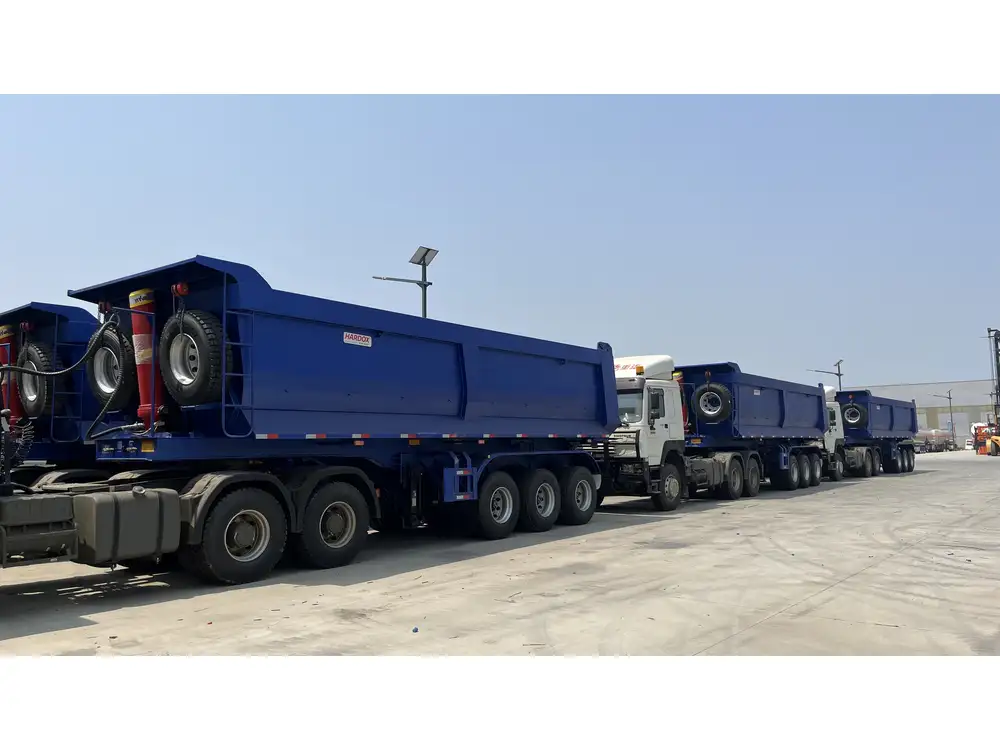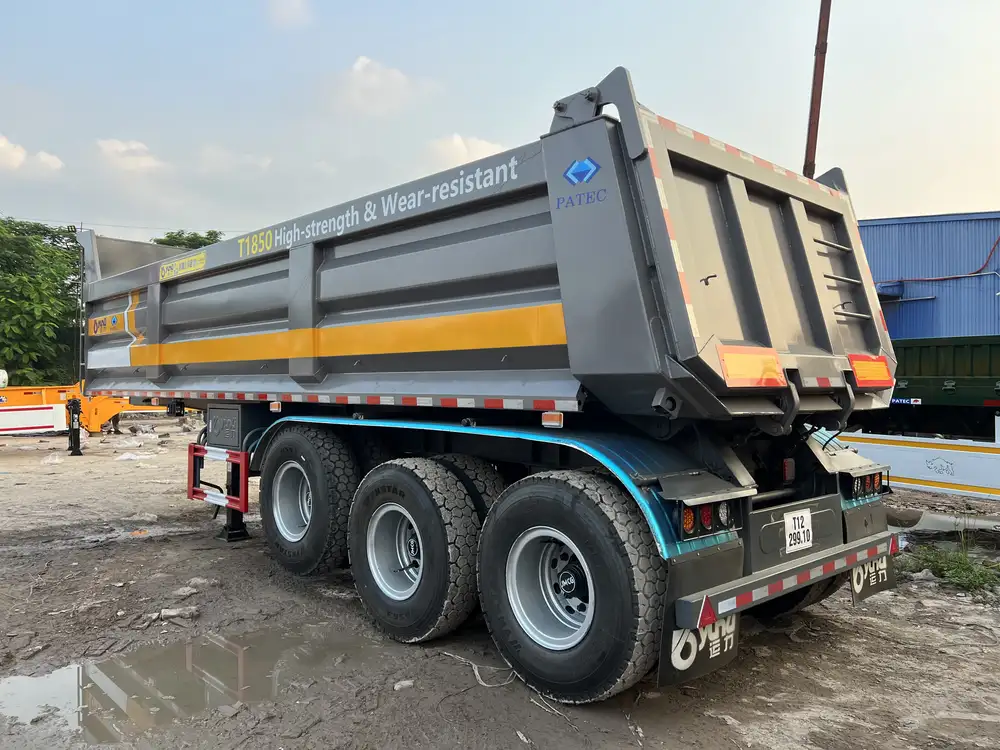When discussing the dimensions of a semi truck with a trailer, one critical factor that both transport professionals and casual observers might ponder is the height. Understanding how tall a semi truck with a trailer stands is essential for navigation, compliance with regulations, and ensuring safe transport of goods. In this comprehensive guide, we will delve into various aspects surrounding the height of semi trucks with trailers, illuminating key insights, potential challenges, and best practices for addressing them.
Key Dimensions of a Semi Truck and Trailer
1. Standard Height Range
In general, a typical semi truck without a trailer measures approximately 13.5 to 14 feet (around 4.1 to 4.3 meters) in height. When fully assembled with a standard trailer, the overall height can reach anywhere between 13.5 feet (4.1 meters) and 14.5 feet (4.4 meters), depending on several factors including tire size and type of trailer used.
| Component | Measurement |
|---|---|
| Semi Truck Height | 13.5 – 14 feet |
| Standard Trailer Height | 4.0 – 5.0 feet |
| Total Height with Trailer | 13.5 – 14.5 feet |

2. Types of Trailers Affecting Height
Not all trailers are created equal, and their designs can significantly impact the overall height of the truck and trailer combination. Here are common trailer types and their average heights:
| Trailer Type | Average Height |
|---|---|
| Flatbed Trailer | 4.0 – 5.0 feet |
| Dry Van Trailer | 4.0 – 5.5 feet |
| Refrigerated Trailer | 4.0 – 5.5 feet |
| Dump Trailer | 5.0 – 6.0 feet |
These variations influence the combined height of the vehicle equipped with the trailer, which should be accounted for when planning routes through areas with height restrictions.
Factors That Influence Semi Truck Height
1. Tire Size and Type
Unquestionably, the size of the tires profoundly affects the height of both the truck and trailer. Larger tires can elevate the overall vehicle height, which is especially pertinent for trucks and trailers intended for rugged terrains. Conversely, smaller tires may lower the height, creating additional clearance for low bridges or overpasses.

2. Load and Equipment
The weight and type of cargo loaded onto a semi-trailer can alter its height. For instance, certain heavy machinery or construction materials, when loaded, might shift the trailer’s center of gravity, thus slightly altering the perceived height as well. Furthermore, attachments such as tarps or chase vehicles introduce additional height considerations.
3. Custom Configurations
Custom-built semi trucks with specialized equipment, such as tanks or bulk trailers, may have taller profiles. For example, tankers designed for liquids can be significantly taller due to their cylindrical shape which necessitates greater height to maintain structural integrity and efficiency.
Legal Height Restrictions and Compliance

1. Federal Regulations
In the United States, federal law generally stipulates a maximum allowable height of 13.5 feet for vehicles operating on public roads. However, there can be exceptions based on state regulations or specific routes.
2. State-Specific Variations
States have their unique regulations regarding vehicle height limits. For example, in certain jurisdictions, roadways may permit higher registration under special permits, which can allow certain vehicles to exceed the standard height limitations by a few inches or feet. Always check state regulations or consult local Department of Transport offices before embarking on a route that might have height constraints.
3. Low Clearance Signage
It is vital for truck drivers to remain vigilant for low clearance signage. Many areas, particularly urban environments, may have underpasses or bridges that can pose severe risks for vehicles exceeding the designated height. Failure to adhere to these guidelines can lead to significant accidents, fines, and damage to both vehicle and infrastructure.

Best Practices for Height Management
1. Proper Loading Techniques
Transport professionals should carefully consider the loading process to maintain the best possible height profile. Utilizing proper loading techniques will ensure that the trailer’s cargo does not disturb its stability or height.
2. Conducting Pre-Trip Inspections
Conducting thorough pre-trip inspections allows drivers to assess potential height concerns. This includes verifying tire sizes, inspecting trailer load distribution, and confirming clearance limits for roads on the intended route. Pre-trip diligence can mitigate unforeseen complications during transit.

3. Utilizing Technology
Implementing GPS navigation systems designed specifically for commercial trucking can help route drivers who are above the standard height. These systems often have height data incorporated into their maps to aid in avoiding low-clearance roads, bridges, and intersections.
4. Constant Height Awareness Training
Regular training for drivers on height awareness can enhance safety and preparedness. Topics should include recognizing signs for height restrictions, understanding the effects of cargo on height, and handling low-clearance situations proficiently.
Frequently Asked Questions About Semi Truck Height

1. What is the legal maximum height for semi trucks with trailers in the United States?
The standard maximum height is 13.5 feet (4.1 meters) for vehicles traveling on public roads. Some exceptions exist depending on local and state regulations.
2. How can I find out about height restrictions along my route?
Researching your route by using route planning tools and GPS systems with height restrictions will provide necessary information. Additionally, local transport and highway departments may have resources about specific routes.
3. Can the height of a semi truck be adjusted?
While height adjustments are generally not a common practice, specialized vehicles may have adjustable air suspensions, allowing some degree of height modification. However, it is crucial to remain within legal limits.

4. How does weather affect trailer height when loaded with goods?
In adverse weather conditions, such as heavy rain or snow, moisture can accumulate on materials leading to additional load weight. In some instances, inflated loads might momentarily increase height, emphasizing the need for constant awareness and adjustment of driving strategies.
Conclusion: Navigating the Complexities of Semi Truck Height
Understanding the height of a semi truck and trailer is more than a mere academic exercise; it’s a vital piece of knowledge that informs operational planning, legal compliance, and safety measures. By taking into account the multitude of factors that can influence vehicle height, professionals in the transport sector can mitigate risks, ensure compliance with regulations, and maintain operational efficiency.
From knowing the standard height measurements to mastering the intricacies of state regulations and practical management techniques, a well-rounded understanding of semi truck height is indispensable for successful long-haul transport operations. So as you prepare for your next journey, keep these insights in mind, and navigate the roads with confidence.



